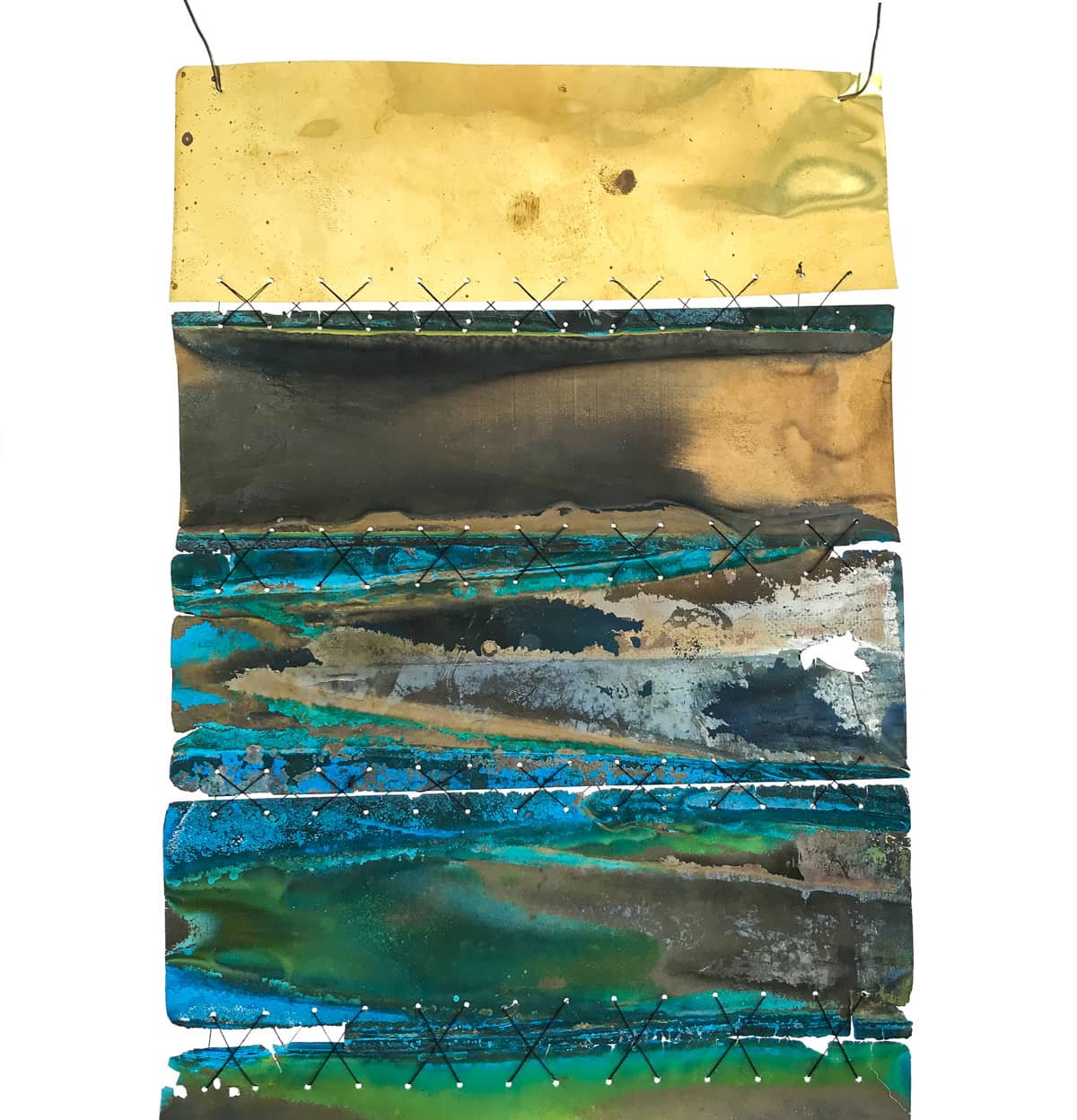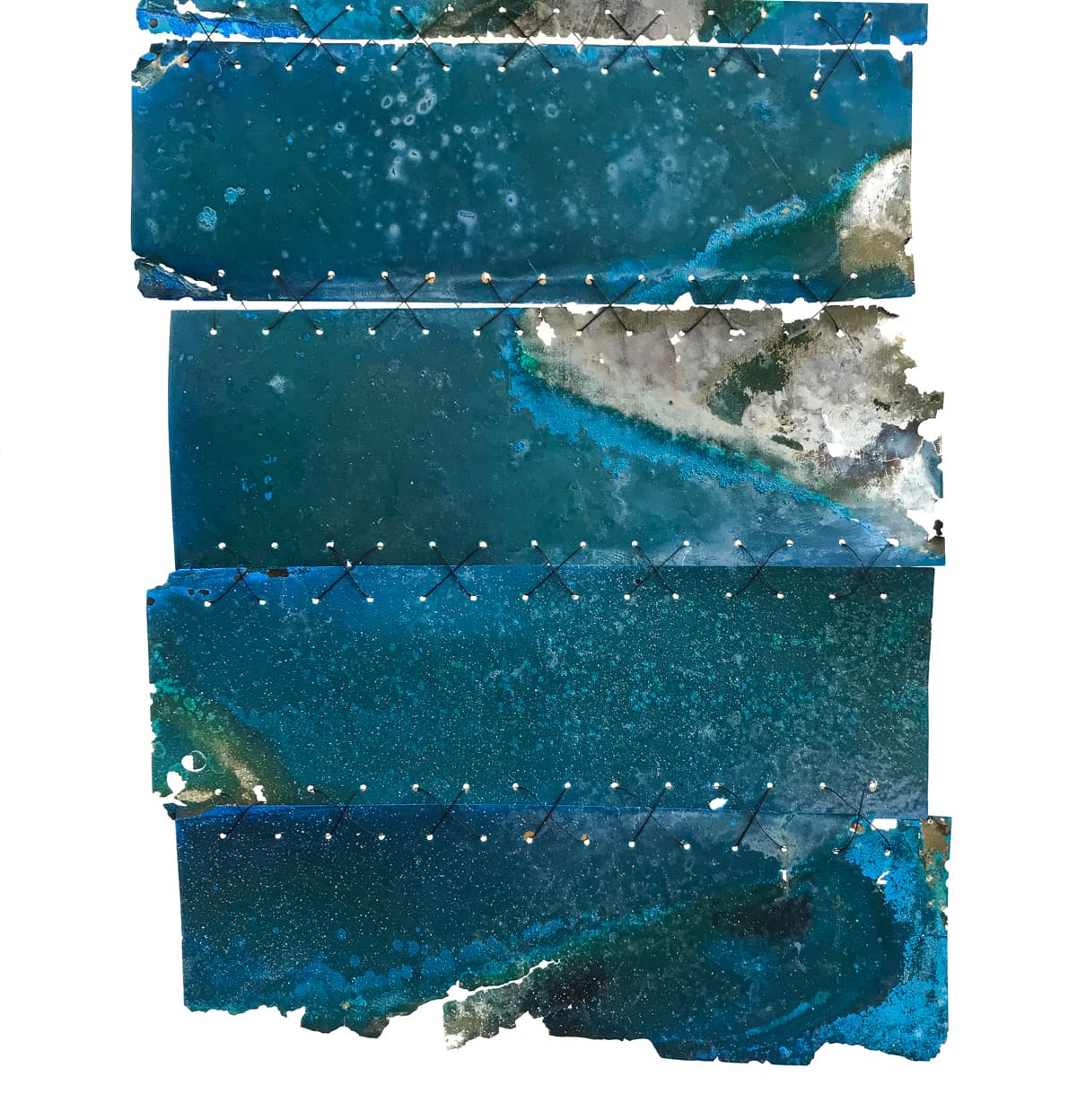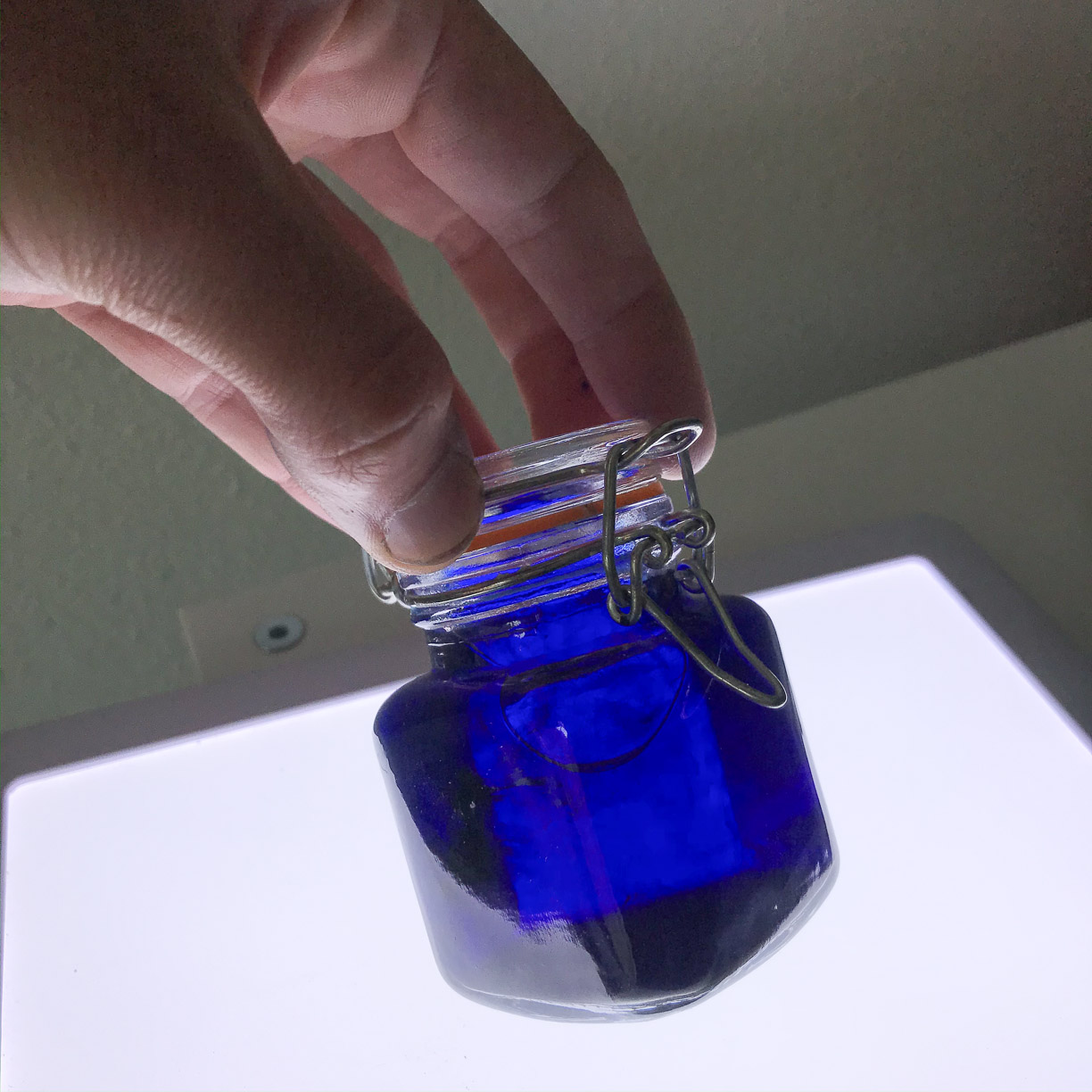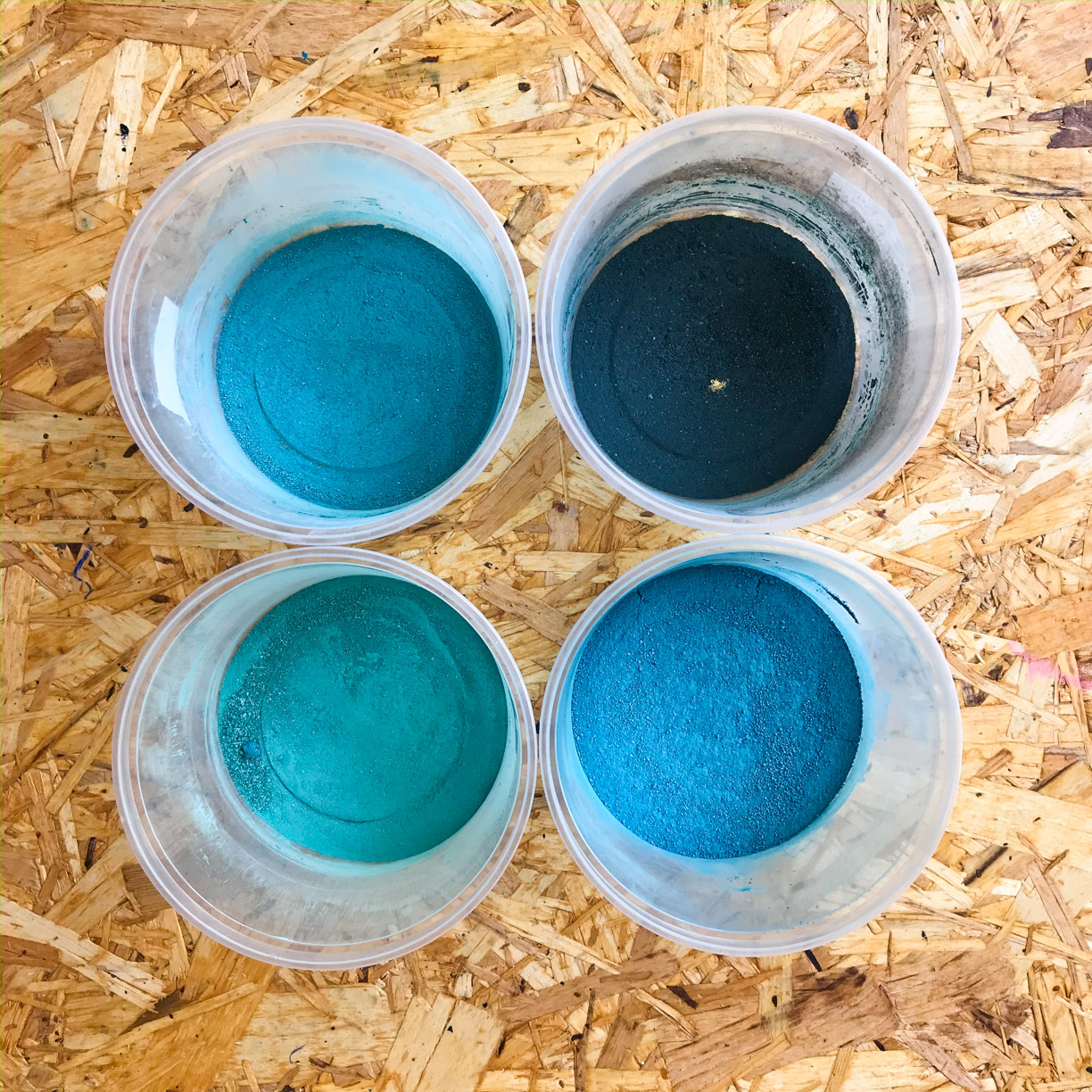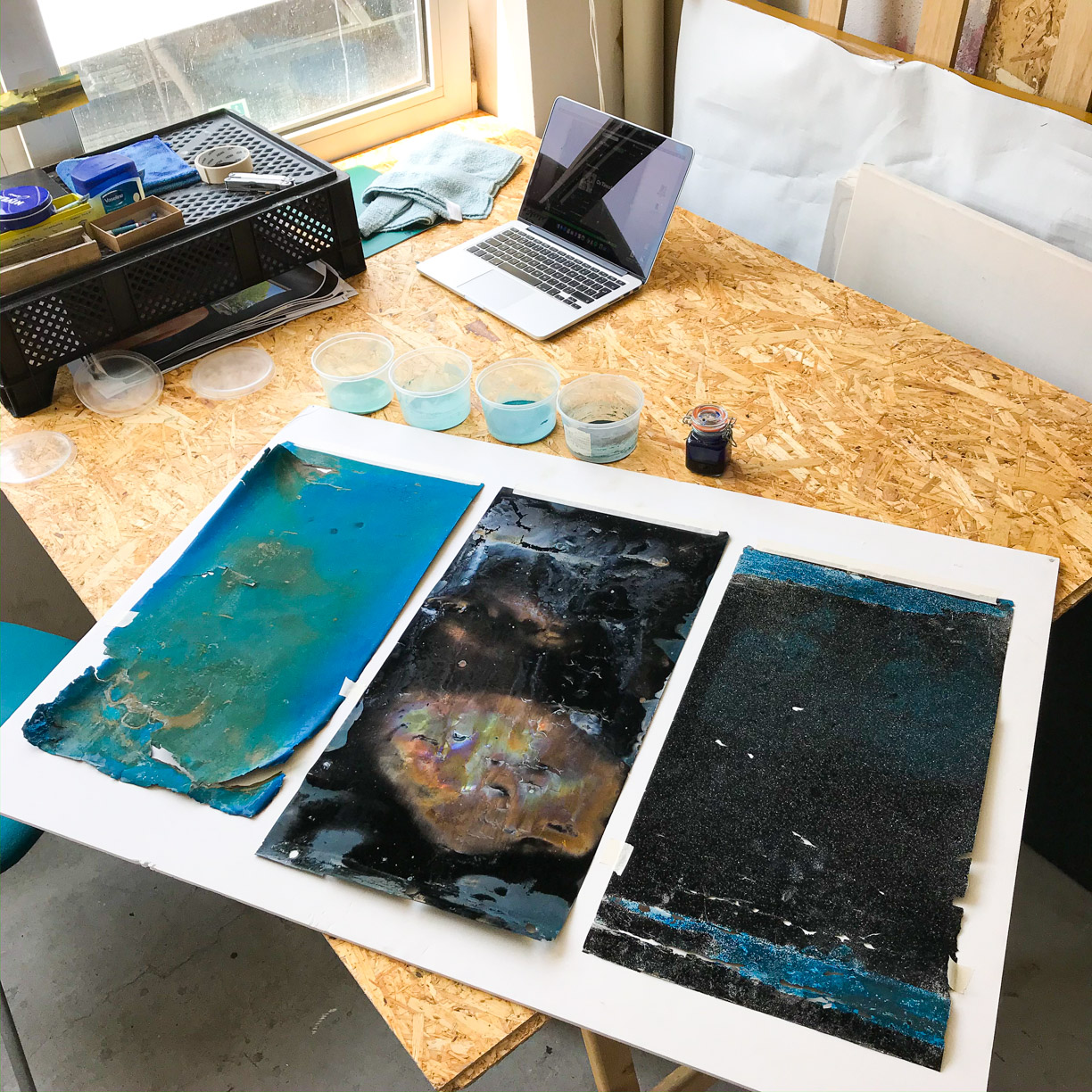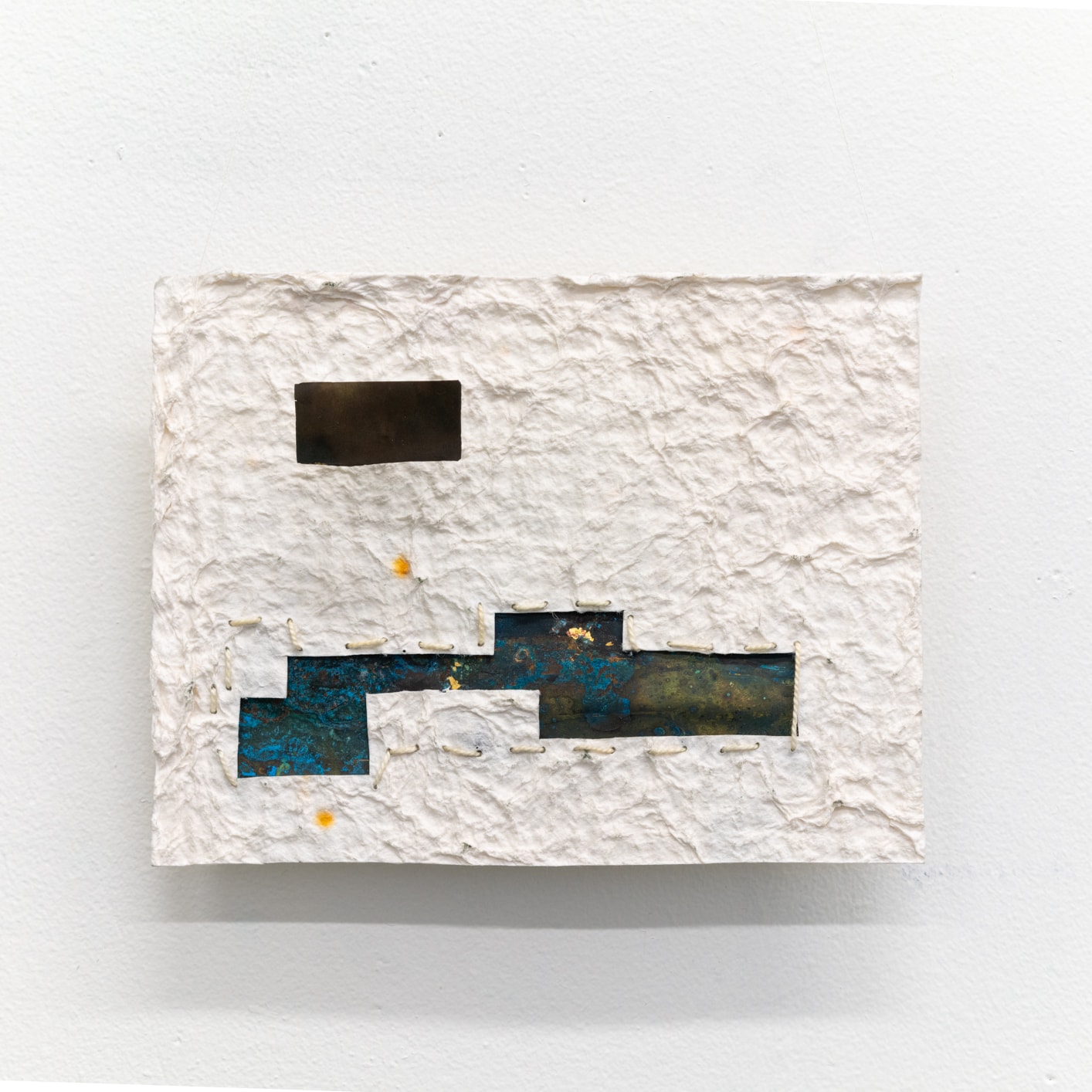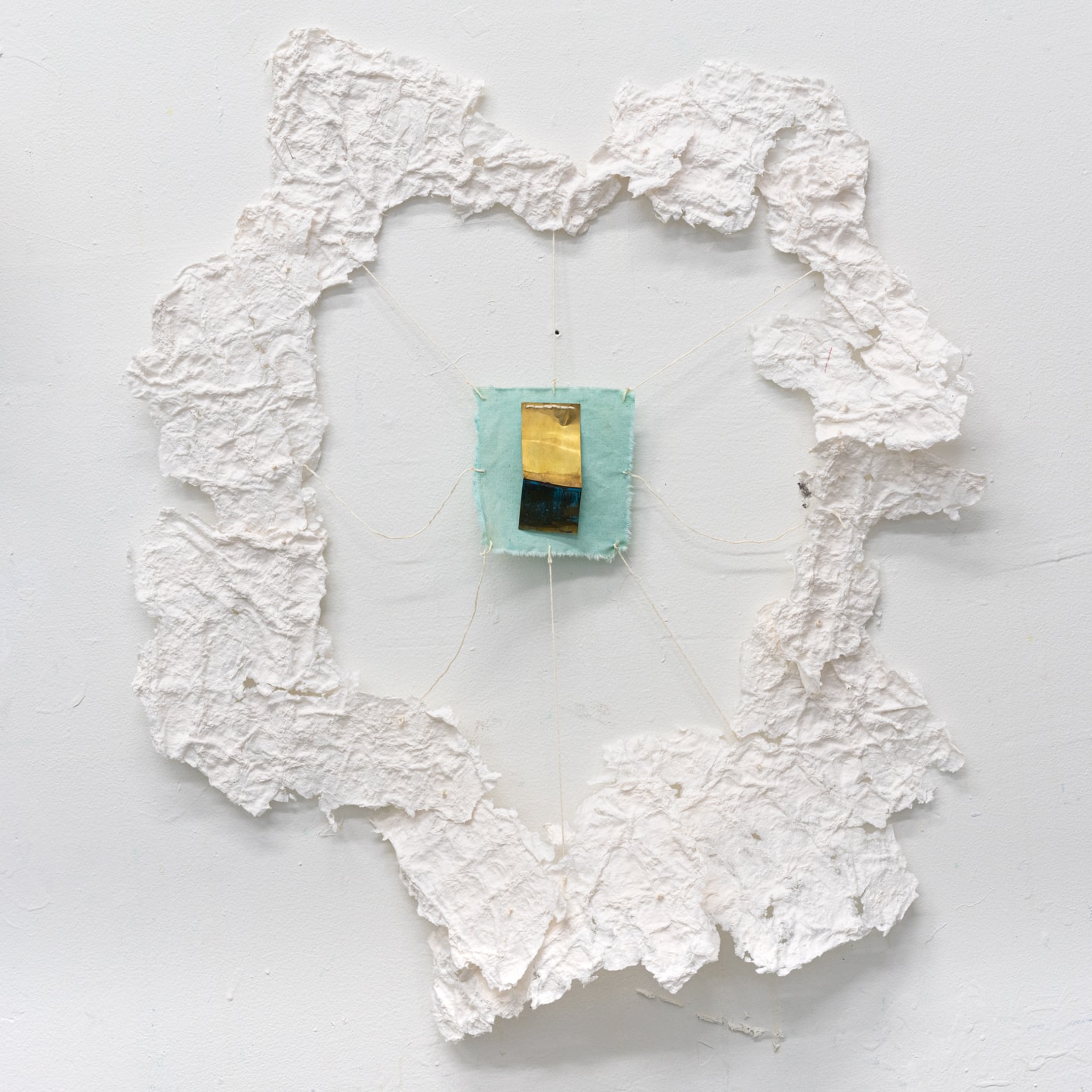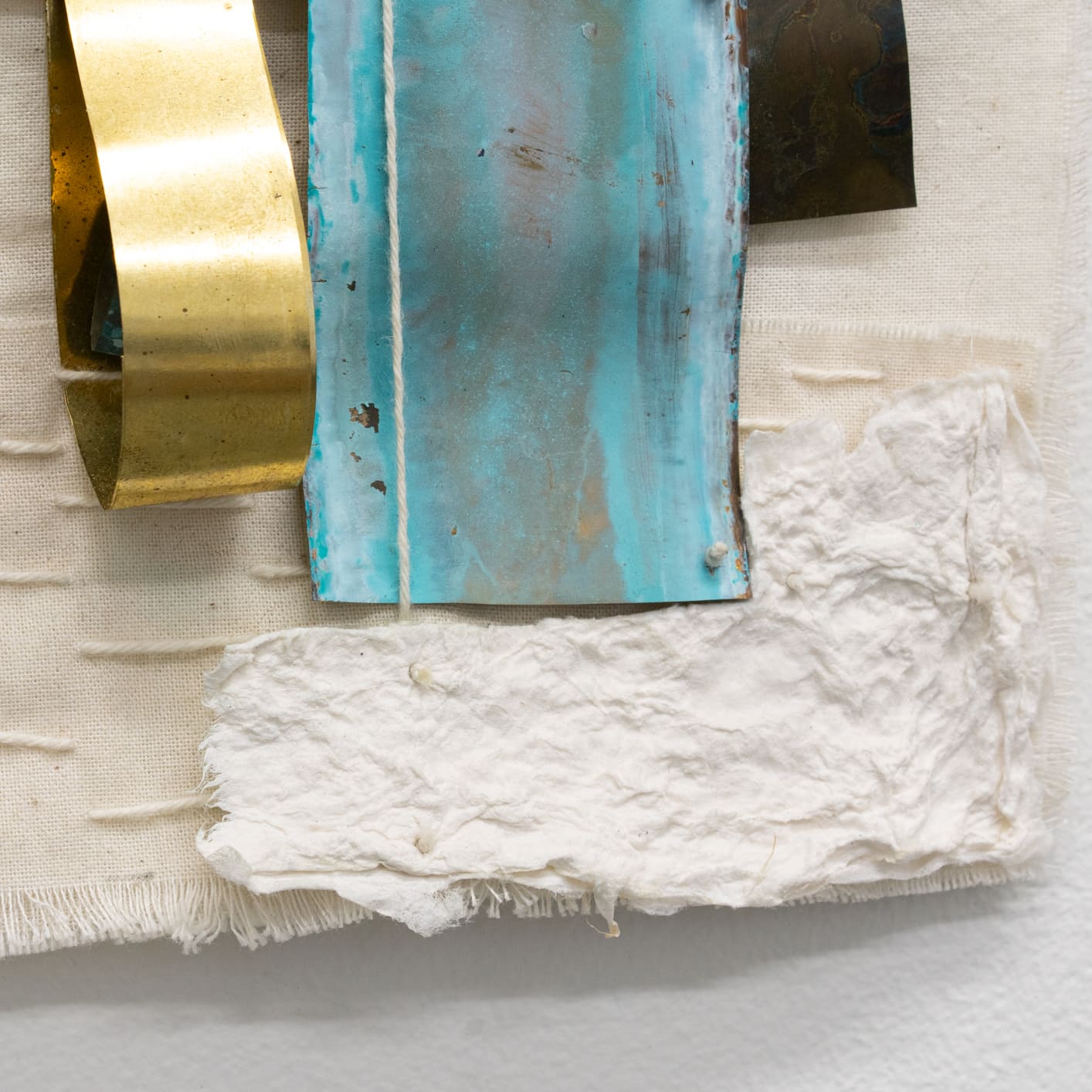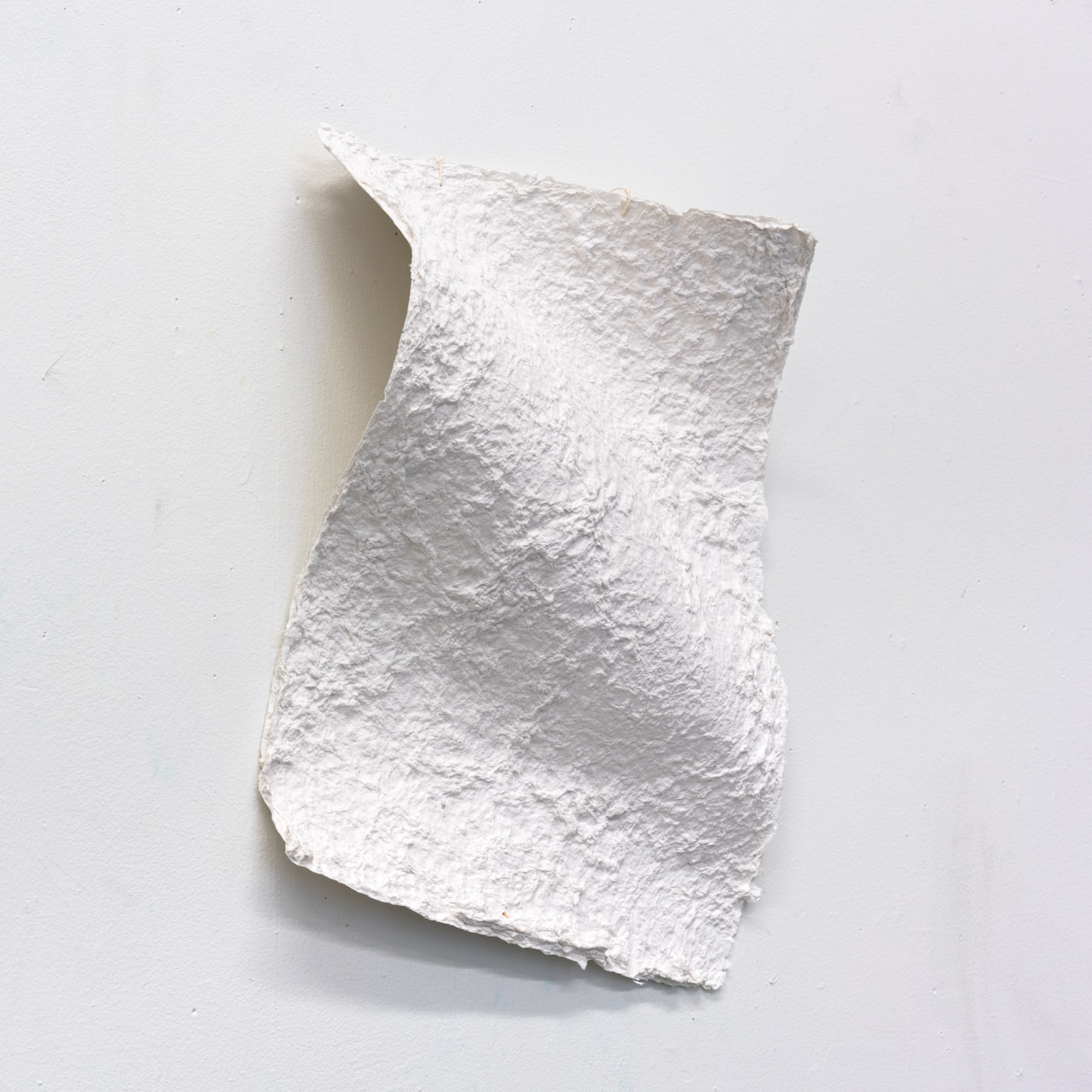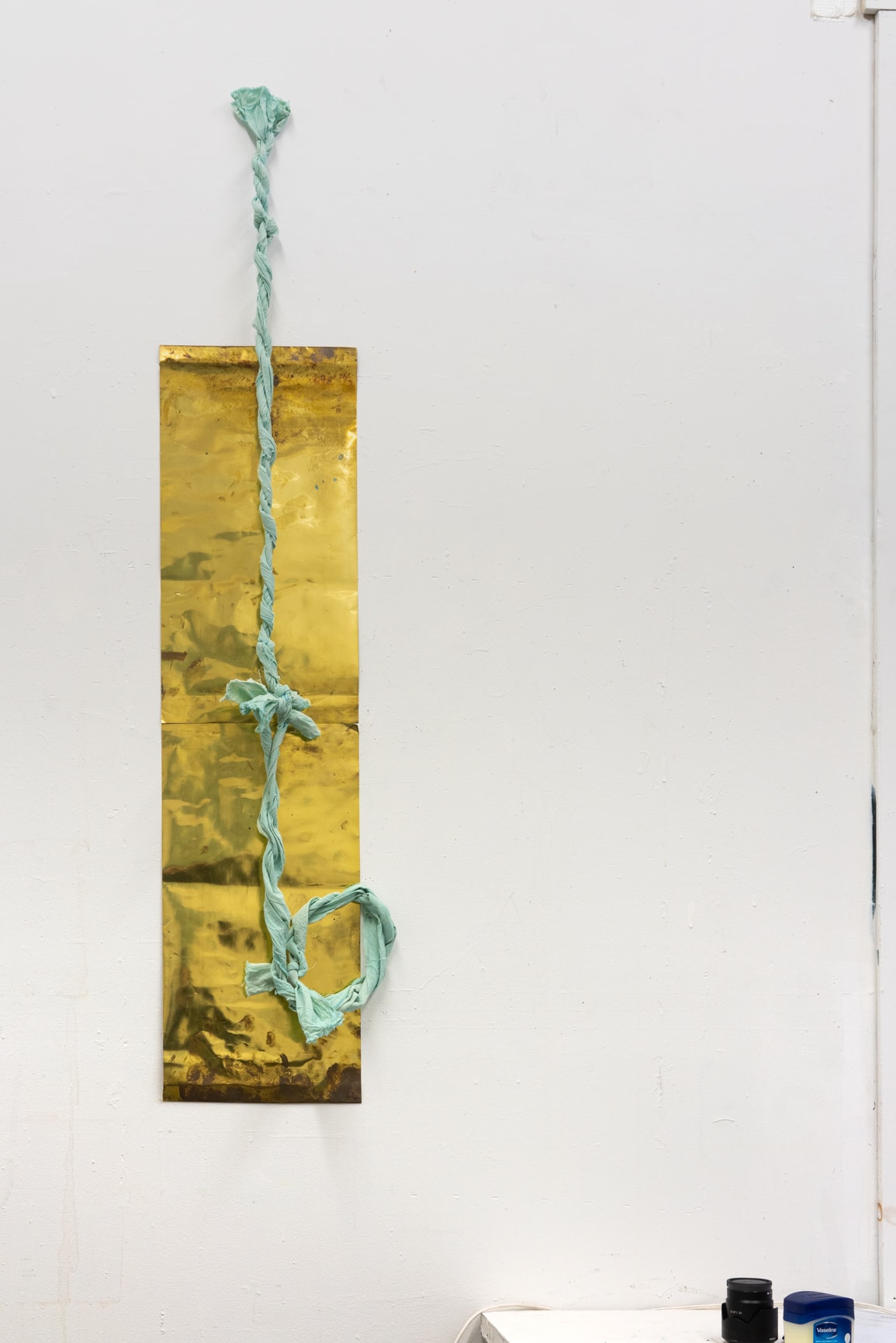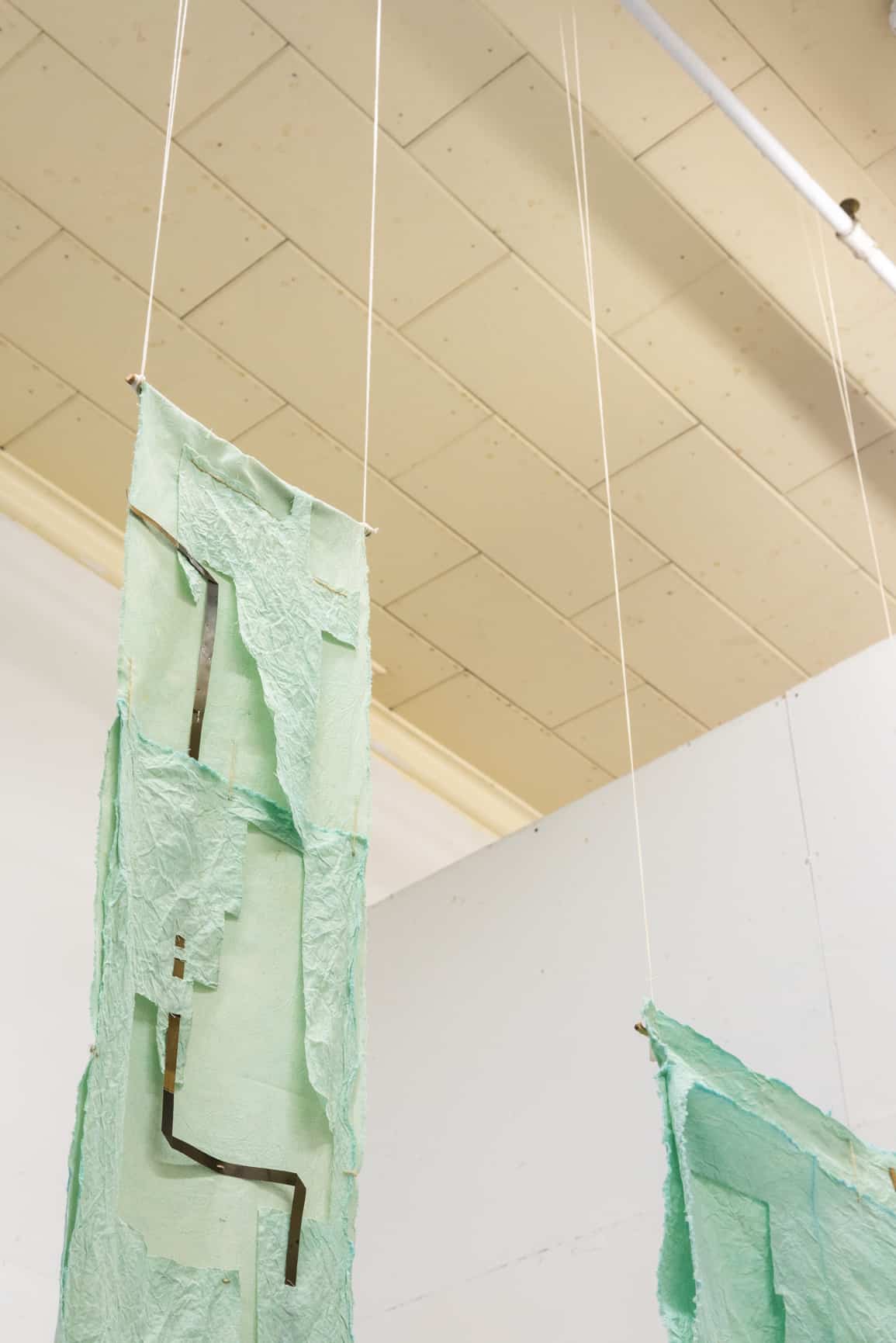In a continual investigation of materiality and transformation, I focus on the corrosion process of brass. I am primarily interested in showing the passage of time and the interplay between decay and creation. The farther the material 'degrades' from its manufactured form, the more interesting the texture, shape, and color. I look for, and let myself be guided by, the wonderment, the curiosity, that came so naturally during childhood but now seems far away in the midst of the rational, scientifically explained, world.
The corrosive process holds a paradox since it is simultaneously a form of decay, as well as a process of balance where it converts metal into a more chemically stable form. It occurs naturally through the interaction of metal with elements in our atmosphere, but it can be manipulated by the use of acids, alkalis and salts. The corrosion brings about a diverse variety of color, texture, and shape. Its byproducts can be used to dye textiles or yield a dry pigment named vertigris. This balance between decay and creation, becoming and dissolving, forms the conceptual background of my practice.
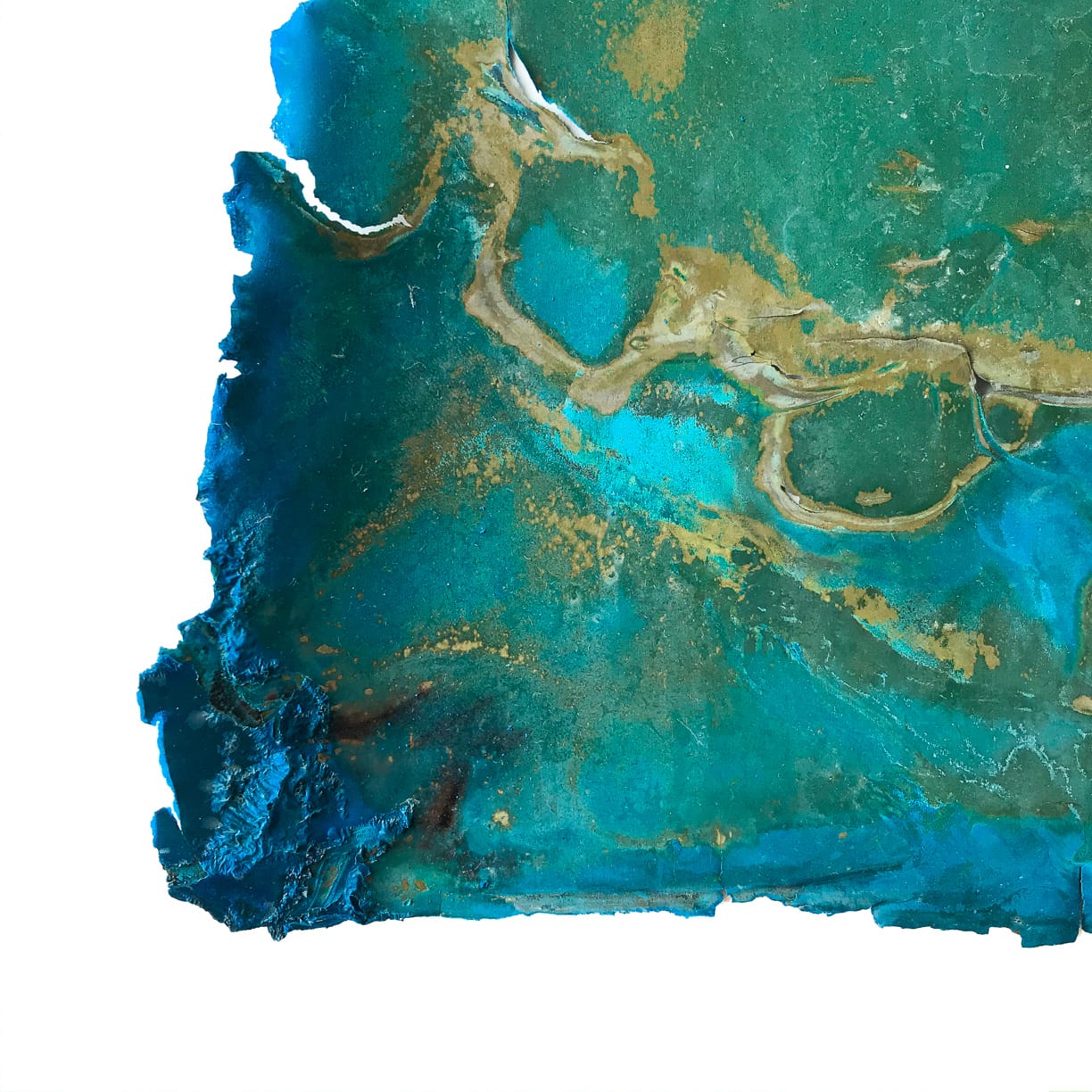
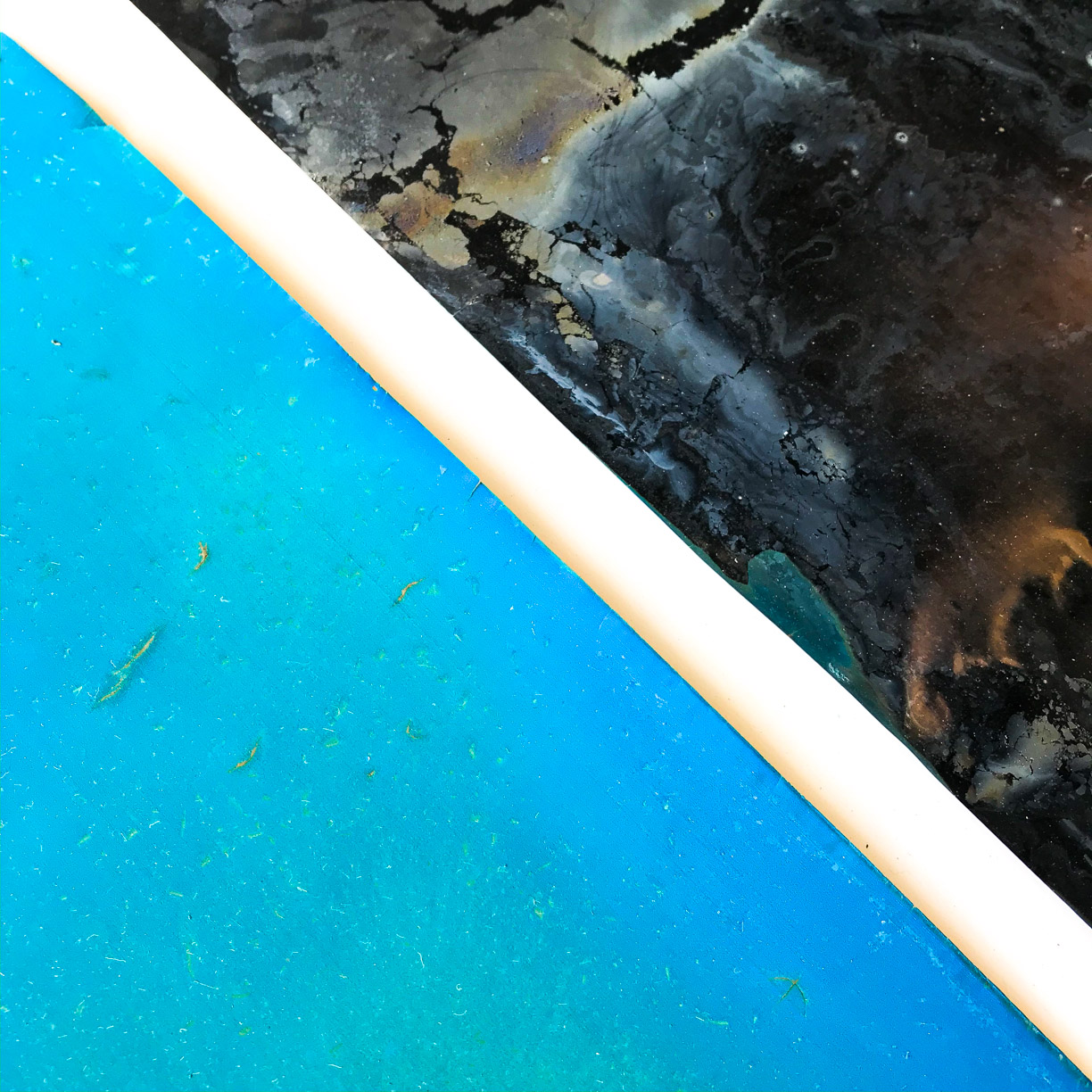
By combining brass and its corrosion with paper making, I try to reach a broader expressive voice where materials and processes relate to each other. Opposing the hard, monumental qualities of brass is the soft, handmade cotton rag paper.
By combining brass and corrosion with my paper making, I try to reach a broader expressive voice where materials and processes relate to each other. Opposing the hard, monumental qualities of brass is the soft, handmade cotton rag paper that sometimes functions as a ground whilst at other times as a textural component in a collage. An integral part of these works is the connection between the brass and the paper through sowing, which can be metaphorically read as inquiry into the ways we (un)naturally connect to our environment. The interplay between these two materials and their processes are the formal focus in my investigation.
The corrosion results in a byproduct that can be used to dye textiles in a pale blue color. I use this dye to color the same raw cotton I use for my paper thus creating a system where the different materials are 'transformations' of the others. The paper contains the cotton, the cotton contains the dye, and the brass is collaged with the paper. A small circulair economy of sorts is put in place where the processes feed each other. The dyed cotton works emphasise natural tendencies like wrinkling, hanging, sacking, and curling and play with its transparency by layering shapes. Thin strips of corroded brass are woven through the works accentuating space and negative space.
Photos: Hanwen Zhang

